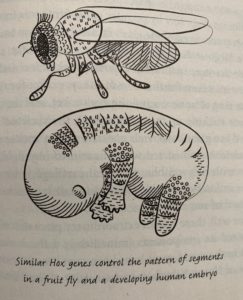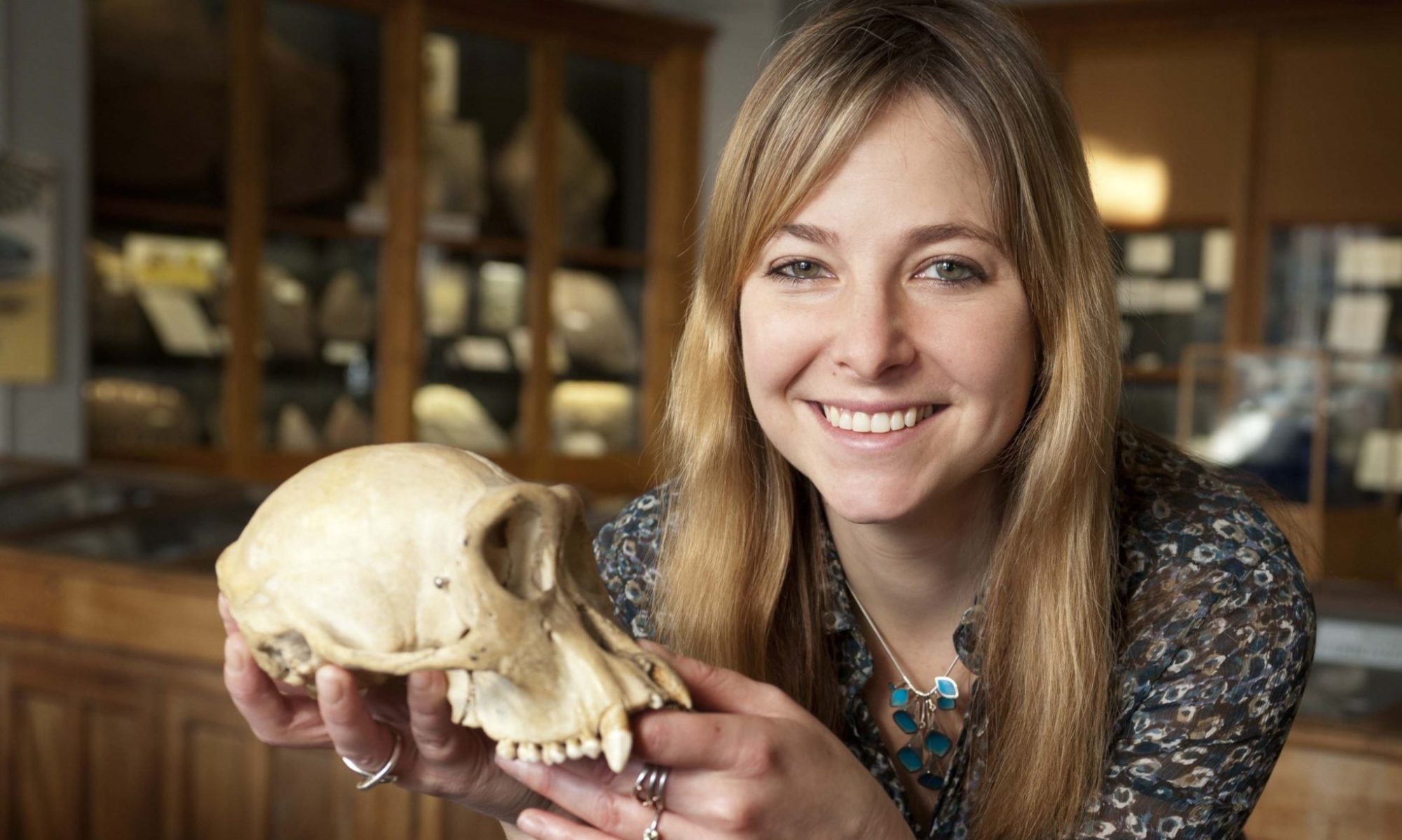Chapter Overview:
This chapter looks to genetic evidence from our distant relatives to show the conservation of Hox genes across all segmented creatures and discusses the human spine as a product of our evolution.
Chapter Summary:

Roberts opens this chapter by discussing the breakthroughs of genetics that fruit fly models were vital for by detailing the discovery of Hox genes using fruit fly models. Hox genes have an extremely ancient history. They exist in all segmented organisms. Even in distantly related species, these genes are shared and important for the layout of the body. She discusses that even snakes, which seem very different than humans and have many more vertebrae than us, share a common pattern of Hox genes.
The embryonic development of the spine is discussed next. The organization that takes place during embryonic development is very important for later function. In the embryo muscles migrate to more distal regions; their origin is visible in the nerves that connect to them. Roberts mentions the danger of spina bifida if there is insufficient folic acid while the spinal cord develops.
The anatomy of the spinal cord is complex. In humans, vertebrae have multiple important functions: weight bearing, protection for the spinal nerves and leveraging processes to allow for functional flexibility. Though individual vertebrae in humans are largely similar, there are two in particular in humans that have unique properties that allow us to support our large heads and move our necks so flexibly. The top two cervical vertebrae have a unique morphology that increases the mobility of the head along several axises of motion.
The number of each type of vertebrae (cervical, thoracic, lumbar, and sacrococcygeal) is different in different vertebrates. There are almost always seven cervical vertebrae in primates, though the number of caudal vertebrae is highly variable by species. Intervertebral disks are very unique as far as joints go. They have unique properties that allow them to absorb shock as well as have a wide range of motion. Though vertebrae are very good at being flexible, in humans they are vulnerable to injury, especially as we age. Pain perception is variable by region of the body. Topically, we are very aware of where our pain originates but internally, we have a much more difficult time locating the source of pain. This has to do with the organization of nerves off of the spinal cord.
Though flexibility in vertebrae has drawbacks, it is vital for our bipedal locomotion. The shape of our spine is a very important adaptation for upright walking and in the fossil, record serves as a very useful indicator of bipedal locomotion. Neanderthals, in contrast had straight spines. Evidence suggests that they were obligate bipeds, so it may seem counterintuitive that they developed stiff backs which detract from their ability to walk upright. Roberts suggests that this could be because they were able to benefit from the lower spine stability that comes with a stockier, less flexible spine. Maybe they carried things that were heavier or engaged in more taxing activities than our ancestors.
